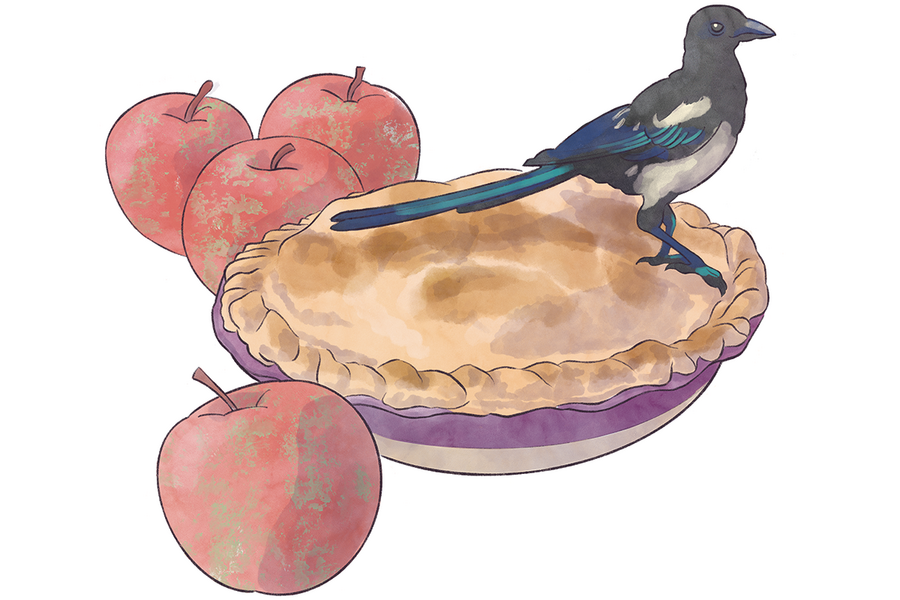Adventures in pie: A celebration of fall
My kitchen was a mess. Clouds of flour dusted the counters, the floor, and the aprons of the women gathered there. Peels from 40 pounds of apples were scattered across the room. Mixing bowls sticky with cinnamon and sugar tipped haphazardly in the sink. The wrappers from 12 pounds’ worth of butter spilled from the trash.
But, wow, did it smell divine.
Six of us had convened that Saturday morning to make apple pies. Once colleagues, now simply friends, we called ourselves “the Magpies.” Like our namesake bird, we shared an intense curiosity about all sorts of things, and we loved to chatter.
Today our curiosity and chatter were directed to pastry-making. While I was no top chef, I knew how to wield a rolling pin and I’d had years of practice serving up strawberry rhubarb, coconut cream, and sour cherry pies to my family. This time, I headed to the farm stand and loaded up on Granny Smiths.
Pie-making is a lot of work. Like many things that are a labor of love, it’s still ... laborious. Whoever coined the phrase “easy as pie” must have meant consuming, not creating.
We spent hours peeling, coring, slicing, measuring, and learning to handle delicate dough.
My apprentices sipped coffee and fretted. “It’s sticking to the rolling pin,” one of them said, her voice full of anguish.
“Oh no, it’s cracking!” came another cry. I assured them the patched crust would simply serve as a reminder that these pies were homemade.
Outside, a freak October snowstorm swirled. Inside, though, it was all steamy windows, Motown playlist, and giddy laughter as we finally hoisted our pies into the oven.
When planning “Pie Day,” we decided that we would each make two pies: one for our families and one to bestow on someone else.
By early afternoon, 12 pies bubbled on the counter, their perfectly imperfect crusts a burnished gold. We rushed to prepare for delivery, packing the pies haphazardly in boxes and bags.
Wielding our fragrant parcels, we marched down the driveway. The snow had melted; the roads were clear. It was time to deliver.
Then, disaster struck. One of the painstakingly crafted pies melted through the bag it was packed in and plopped onto the driveway. Screams of horror ensued. Hilarity quickly followed.
One enterprising friend ran back into the kitchen. When she returned, she was carrying forks.
Readers, we ate that pie. Well, some of it, anyway. The five-second rule extended to five minutes while we poked at the surface of an all-butter crust and scooped bites of steaming apples into our mouths. None of us were too good for what would later become known as “driveway pie.”
The best part was still to come. Handing out pies, we discovered, is even better than eating pies. One of the surprised recipients, a colleague who’d just received some very bad news, was as thrilled as if we’d offered her a bag of cash. A chaplain friend, weary from listening to the problems of others, burst into tears of gratitude as we showed up on her doorstep. The pies that we delivered to a group of activists demonstrating nearby were greeted with whoops of appreciation and choruses of “We love you!”
It was a magnificent day.






